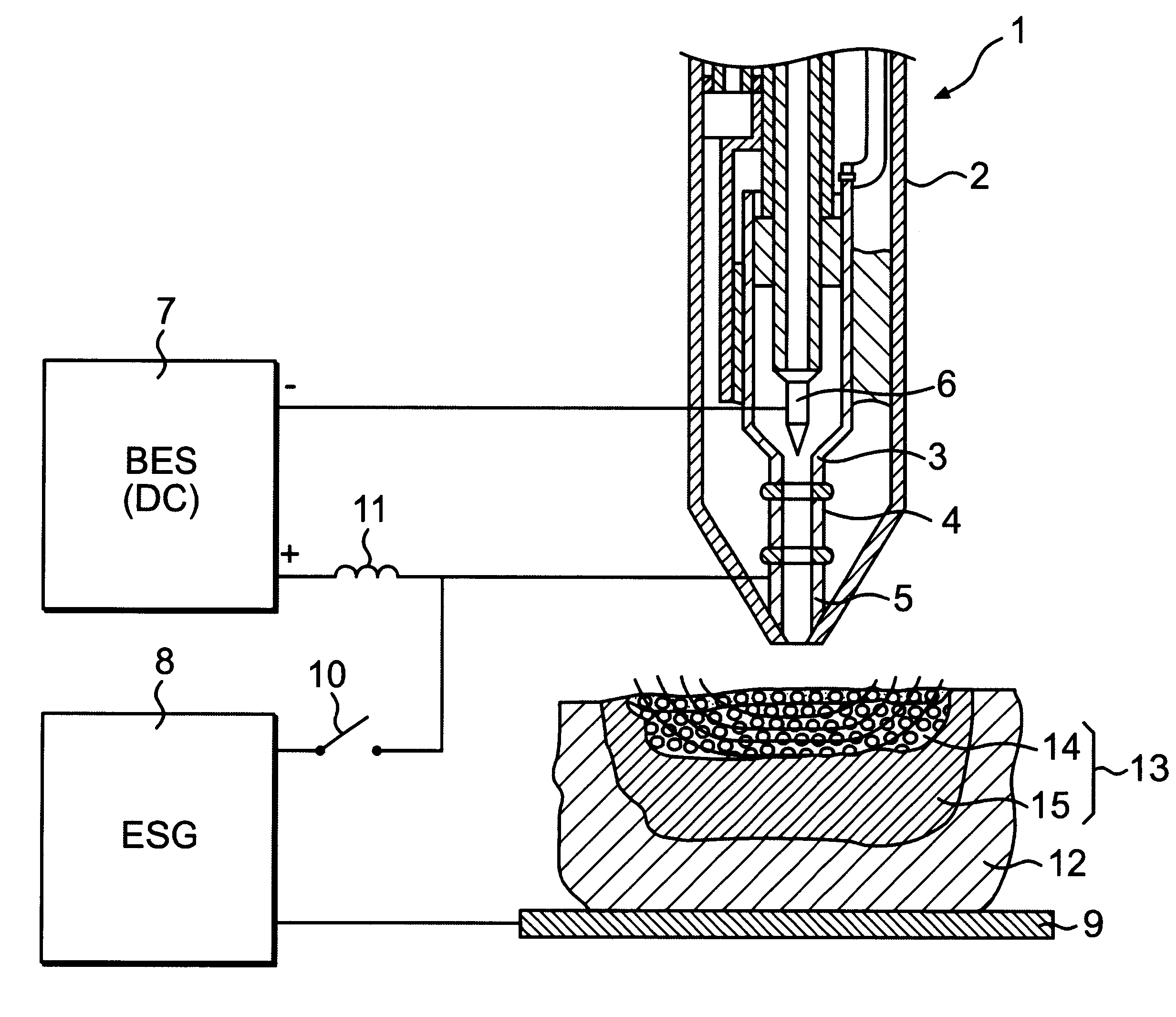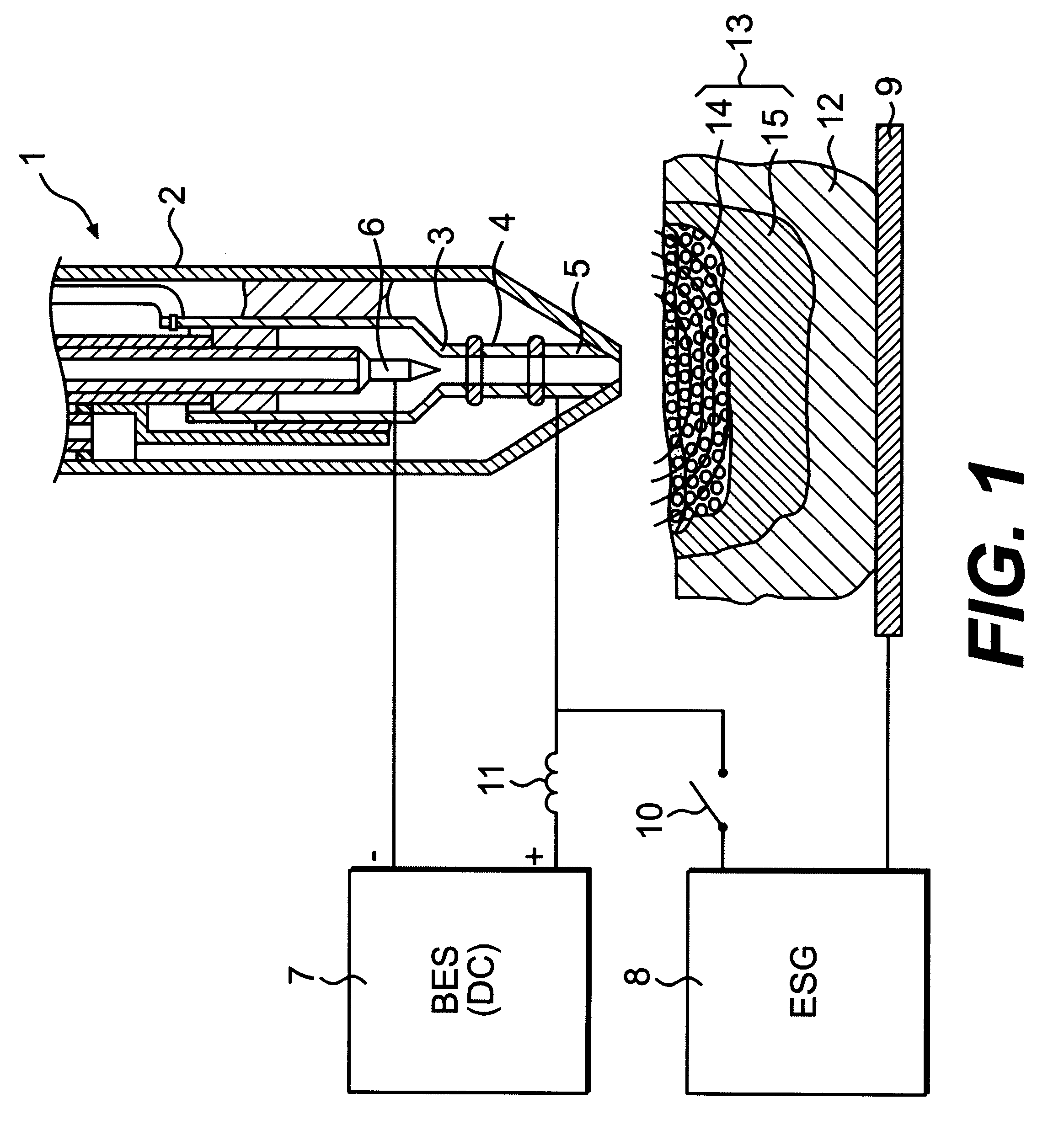Plasma knife
a technology of plasma and blade, applied in the field of plasma knives, can solve the problems of low heat conductivity of porous layer, insufficient blood stopping capacity, and worsening of problems
- Summary
- Abstract
- Description
- Claims
- Application Information
AI Technical Summary
Benefits of technology
Problems solved by technology
Method used
Image
Examples
Embodiment Construction
FIG. 1 shows a plasma-generating means 1 consisting of an electrically non-conductive body 2, which has the form of a pen. The body 2 has a cylindrical duct intended for heating a plasma-generating gas. The duct is formed of sections 3, 4, 5, which are electrically insulated from each other. At the inner end of the duct there is a cathode 6, which is connected to the negative pole of a basic energy source 7 (BES). The outer section 5 of the duct is connected to the positive pole of the basic energy source 7.
The means for transferring electric energy consists of an electrosurgical generator 8 (ESG), one pole of which is connected to the outer section 5 of the duct, and the other pole of which is connected to a diathermic plate 9, which is placed in contact with the patient. The circuit in which the electrosurgical generator is included is provided with an electric switch 16 for switching on and off the electrosurgical function. The electric switch can be operated by the surgeon. This...
PUM
| Property | Measurement | Unit |
|---|---|---|
| diameter | aaaaa | aaaaa |
| diameter | aaaaa | aaaaa |
| voltage | aaaaa | aaaaa |
Abstract
Description
Claims
Application Information
 Login to View More
Login to View More - R&D
- Intellectual Property
- Life Sciences
- Materials
- Tech Scout
- Unparalleled Data Quality
- Higher Quality Content
- 60% Fewer Hallucinations
Browse by: Latest US Patents, China's latest patents, Technical Efficacy Thesaurus, Application Domain, Technology Topic, Popular Technical Reports.
© 2025 PatSnap. All rights reserved.Legal|Privacy policy|Modern Slavery Act Transparency Statement|Sitemap|About US| Contact US: help@patsnap.com


